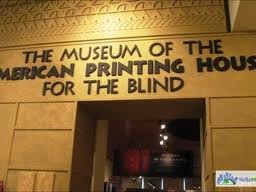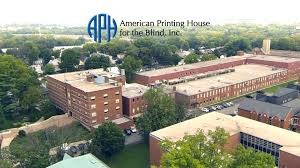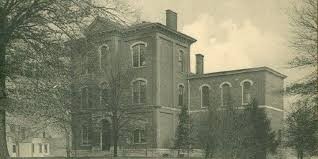Callahan Museum of the American Printing House for the Blind
Introduction
Text-to-speech Audio
Images
Callahan Museum of the American Printing House for the Blind

American Printing House for the Blind

American Printing House for the Blind, erected in 1883

Backstory and Context
Text-to-speech Audio
In 1856, blind man Dempsey B. Sherrod raised money in Mississippi to manufacture books with raised letters. After a year, he was granted a charter to create a national "Publishing House to Print Books in Raised Letters, for the Benefit of the Blind." The General Assembly of Kentucky passed an act to create such a publishing house in 1858. It was not until 1860 that funds for the American Printing House for the Blind (APH) were raised and operations established in the basement of the Kentucky Institution for the Education of the Blind. The Civil War then prevented the APH from receiving any money from Southern states, putting production off until after the war. The APH published its first book, Fables and Tales for Children, in 1861.
During the 1870s, the APH made a name for itself in terms of quality and was delegated funding from the federal government. Thanks to this funding, the APH outgrew its basement in the Kentucky Institution, so it constructed a new building next door. The building was later expanded in 1922 to accommodate more space for a press room and bindery. At the same time, better machinery was being invented for the APH’s purposes and braille began to replace other systems of raised writing. In 1928, the Introduction of Reader’s Digest was produced in braille here.
More changes came in the 1930s and 1940s. The Pratt-Smoot Act allotted more funding for literature for blind adults, leading to a new machine shop. In 1932, Standard English Braille was officially adopted. In 1936, a recording studio was established at the APH so that books and magazines could be listened to instead of read. Production slowed during World War II as there were fewer employees at the production house and many materials needed to make books in braille were also needed for the war effort. Once the war was over, the APH was able to expand, adding a textbook department and a new wing.
Good things continued to happen for the APH in the last half of the century They partnered with International Business Machines (IBM) to write an English text-to-braille translation programs. The Department of Educational Research supported the APH as they added to their catalog, including fifty-two braille magazines and the first World Book Encyclopedia in braille. A $2 million renovation was completed in 1980. Eight years later, the Braille Research Center was created. Times changed as Talking Books transitioned from rigid vinyl discs to flexible records to cassettes and CDs. Finally, the Museum of the American Printing House for the Blind opened in October 1994.
In 2001, the APH inducted the first thirty-two members of the Hall of Fame for Leaders and Legends of the Blindness Field. Two years later, it revealed the Book Port, a portable book reading device that reads electronic text files with pre-recorded or synthetic speech. Then came Braille+ Mobile Manager, a PDA with a braille-style keyboard. The APH celebrated its one-hundred-fiftieth anniversary in 2008 and ended an era in 2010 when it produced its last Talking Book on cassette, finally making a complete switch to digital.
Cite This Entry
Swartz, Hannah, Christopher Leadingham, and Emily Brammer. "Callahan Museum of the American Printing House for the Blind." Clio: Your Guide to History. April 26, 2019. Accessed April 21, 2025. https://theclio.com/entry/2833
Sources
Museum of the American Printing House for the Blind. Kentucky Tourism. Accessed April 26, 2019. https://www.kentuckytourism.com/museum-of-the-american-printing-house-for-the-blind/.
Museum of the American Printing House for the Blind. Smithsonian Magazine. Accessed April 26, 2019. https://www.smithsonianmag.com/museumday/venues/museum/museum-of-the-american-printing-house-for-the-blind/.

